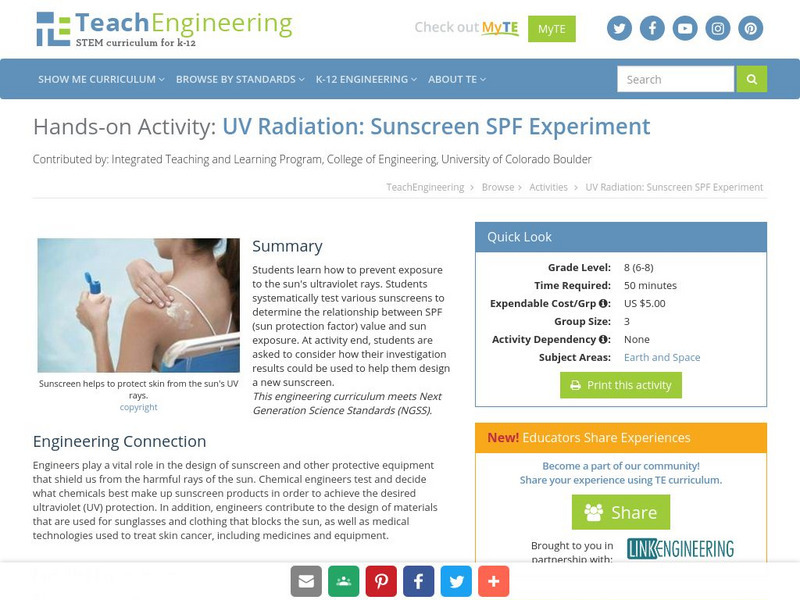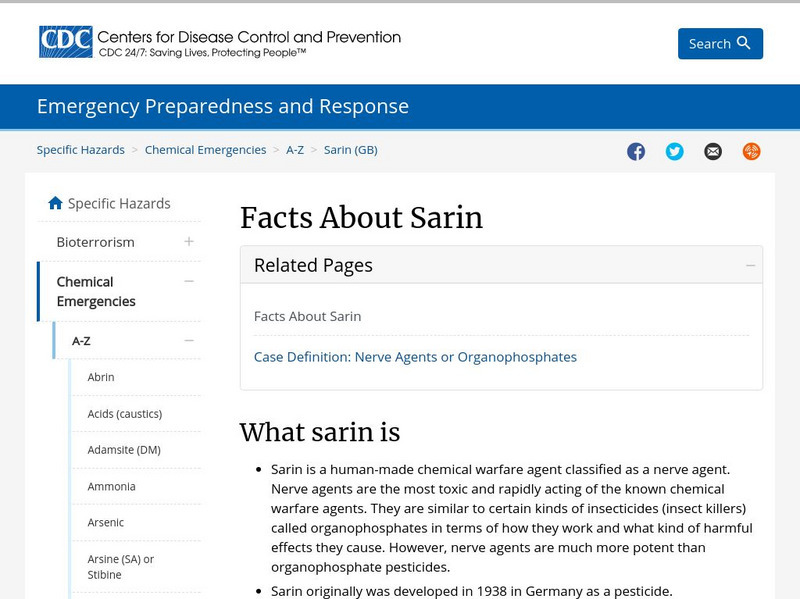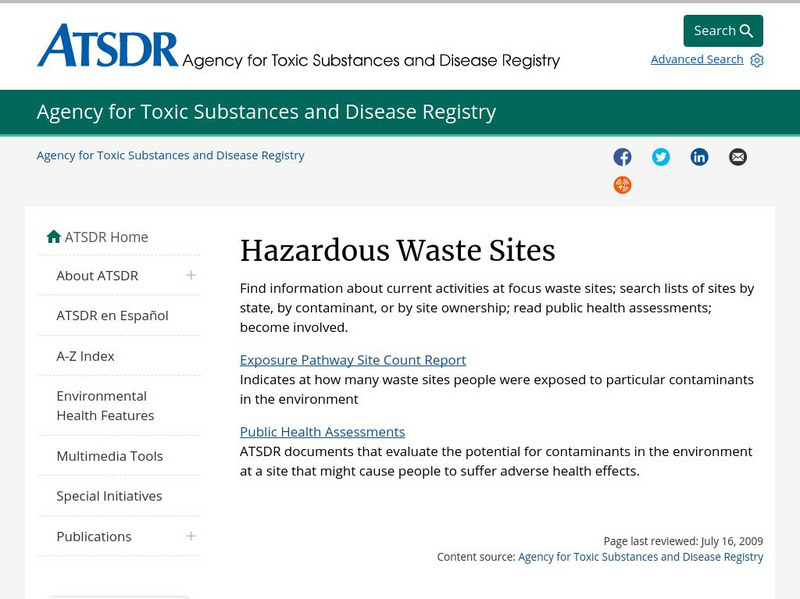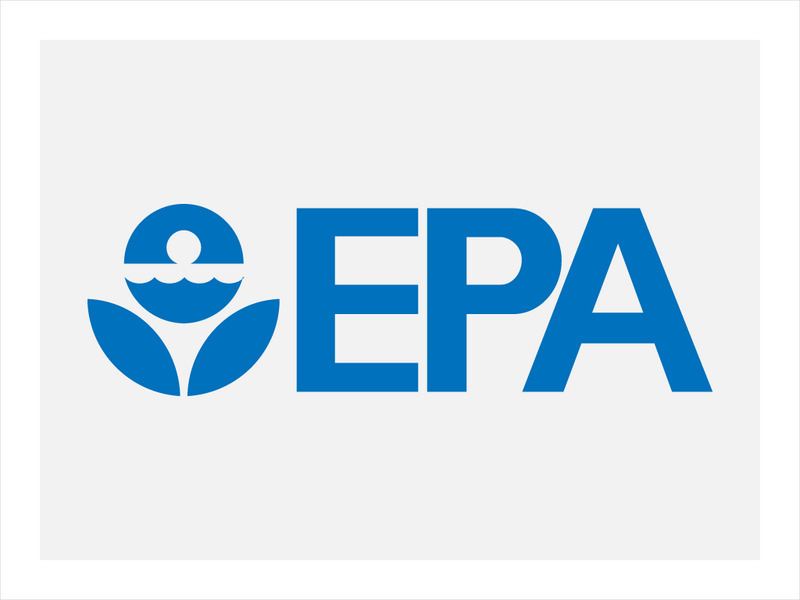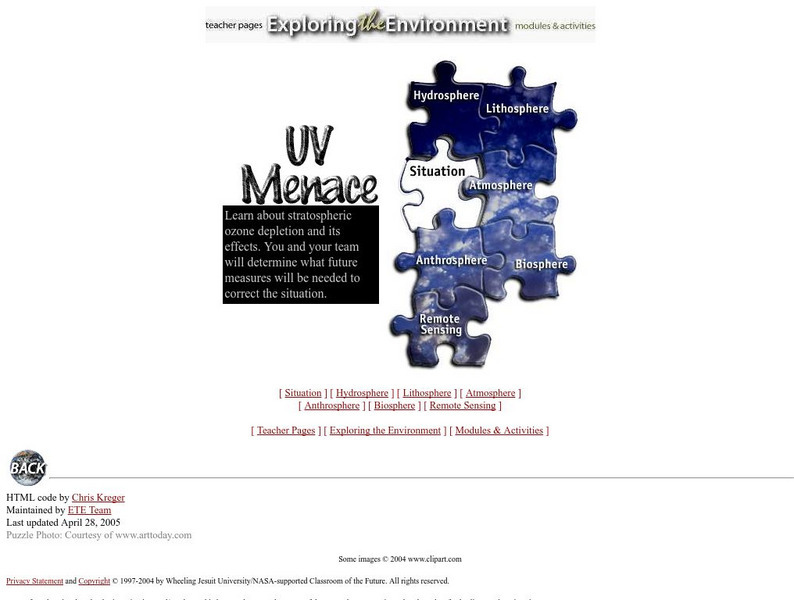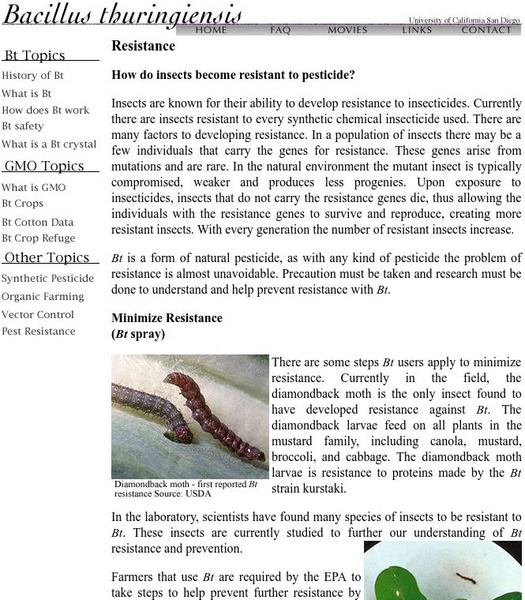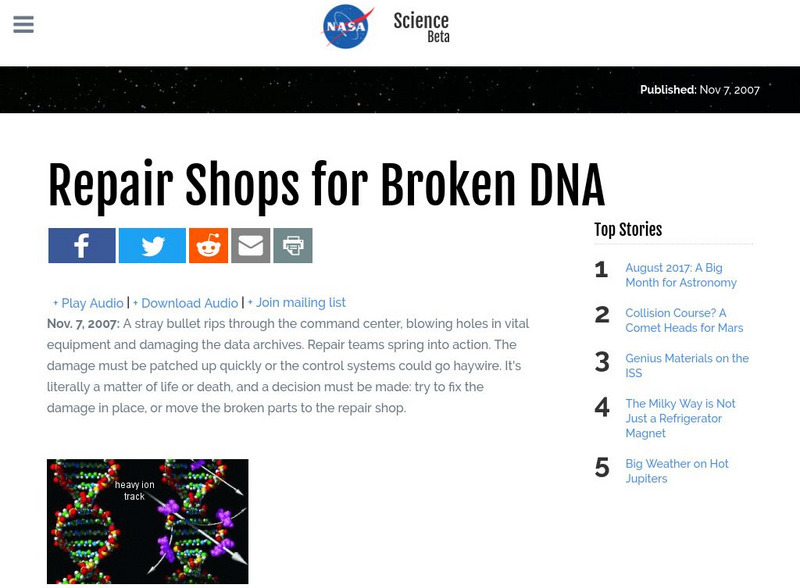Other
Green Facts: Scientific Facts on Dioxins
Dioxins have been found to impose potentially harmful, even fatal effects. Learn about these persistent organic pollutants in this thorough report on dioxin exposure. A summary, details, and cited sources section are provided on this site.
Centers for Disease Control and Prevention
Centers for Disease Control: Atsdr: Beryllium
Information on beryllium and beryllium exposure disease for those who need information due to possible exposure at work.
TeachEngineering
Teach Engineering: It Burns!
In this activity, students learn how to prevent exposure to the Sun's harmful ultraviolet rays. Students will systematically test various sunscreens to determine the relationship between spf (sun protection factor) value and sun...
Centers for Disease Control and Prevention
Centers for Disease Control: Facts About Vx
An overview of VX, a nerve agent and known weapon of chemical warfare. Includes information about the signs and symptoms of VX exposure and recommended treatments.
Centers for Disease Control and Prevention
Centers for Disease Control: Facts About Sarin
An overview of the nerve agent sarin, including signs and symptoms of sarin exposure, ways to protect yourself from exposures, and treatment.
US Environmental Protection Agency
Epa: Assessing Health Risks From Pesticides
This site provides information about the active ingredients registered as pesticides. Site discusses toxicology, exposure, dose-response and risk characterization.
Centers for Disease Control and Prevention
Centers for Disease Control: Facts About Sulfur Mustard
An overview of sulfur mustard, also known as mustard gas. Includes signs and symptoms of, and treatment for exposure to sulfur mustard.
Centers for Disease Control and Prevention
Centers for Disease Control: Facts About Ricin
Information that answers the questions what ricin is, where ricin is found and how it is used, how ricin exposures occur, how ricin affects the body, signs and symptoms of ricin exposure, and the like.
Centers for Disease Control and Prevention
Centers for Disease Control: Facts About Phosgene
Find out about the dangers of the chemical, phosgene, and how people can protect themselves from exposure.
Wikimedia
Wikipedia: Dioxin
Use Wikipedia to explore dioxins. It gives the definition, as well as, sources, health effects, and exposure incidents.
PBS
Pbs Learning Media: Environmental Public Health: Protect Your Health and Environment
Learners learn what they can do to protect themselves from health hazards in their environment. They learn about potential hazards, how these can affect their health, and what they can do to minimize their exposure.
National Institutes of Health
Niehs: Kids' Pages: What's Wrong Whiskers?
Online children's story that teaches about the health effects of exposure to environmental hazards such as chemicals. Click on "next" at the bottom of the story to see why Whiskers, the family cat, becomes ill from all the chemicals used...
Centers for Disease Control and Prevention
Centers for Disease Control: Atsdr: Superfund Hazardous Waste Sites
Extremely detailed look at the dangers associated with the hazardous and solid waste sites in the U.S.
Other
Phosphoric Acid
This Canadian Centre of Occupational Health & Safety site offers links about the specific health effects, safety, proper handling, and first aid of phosphoric acid exposure.
Encyclopedia of Earth
Encyclopedia of Earth: Uranium
Information about the radioactive element, Uranium, atomic number 92. Describes its history, physical and atomic properties, how abundant it is on the Earth, and permissible exposure limits. Also discusses sources, uses, isotopes,...
US Environmental Protection Agency
Epa: Air Toxics Website Nickel
Very detailed information on the chemical element Nickel. Discusses its uses, physical properties, and the potential effects of exposure.
Center for Educational Technologies
Nasa Classroom of the Future: Environment Module: Uv Menace
This site provides information and activities for classes to learn more about ozone depletion and UV radiation.
University of California
Bacillus Thuringiensis: How Do Insects Become Resistant to Pesticide?
Insects are known for their ability to develop resistance to insecticides. Currently there are insects resistant to every synthetic chemical insecticide used. There are many factors to developing resistance. In a population of insects...
National Institutes of Health
Niehs: Kids Pages: Crabby Kathy
Online children's story that teaches about the health effects of exposure to environmental hazards. Click on "next" at the bottom of the story to see why Kathy becomes "crabby" from all the chemicals and contaminants in her room.
Other
American Lung Association: General Smoking Facts
This page discusses facts and statistics on smoking, both in the United States and world-wide. Areas addressed include the thousands of chemicals in cigarettes, rates of lung disease in smokers, smoking-related health conditions, smoking...
US Environmental Protection Agency
Epa: Mercury
This site provides a user navigated slide show with animations providing basic information about the element Mercury.
NASA
Nasa: Repair Shops for Broken Dna
Discover more about the late-breaking research into DNA repair shops located in the cell. The work is being done by NASA scientists who are interested in the effects of radiation on astronauts. (Nov. 7, 2007)


